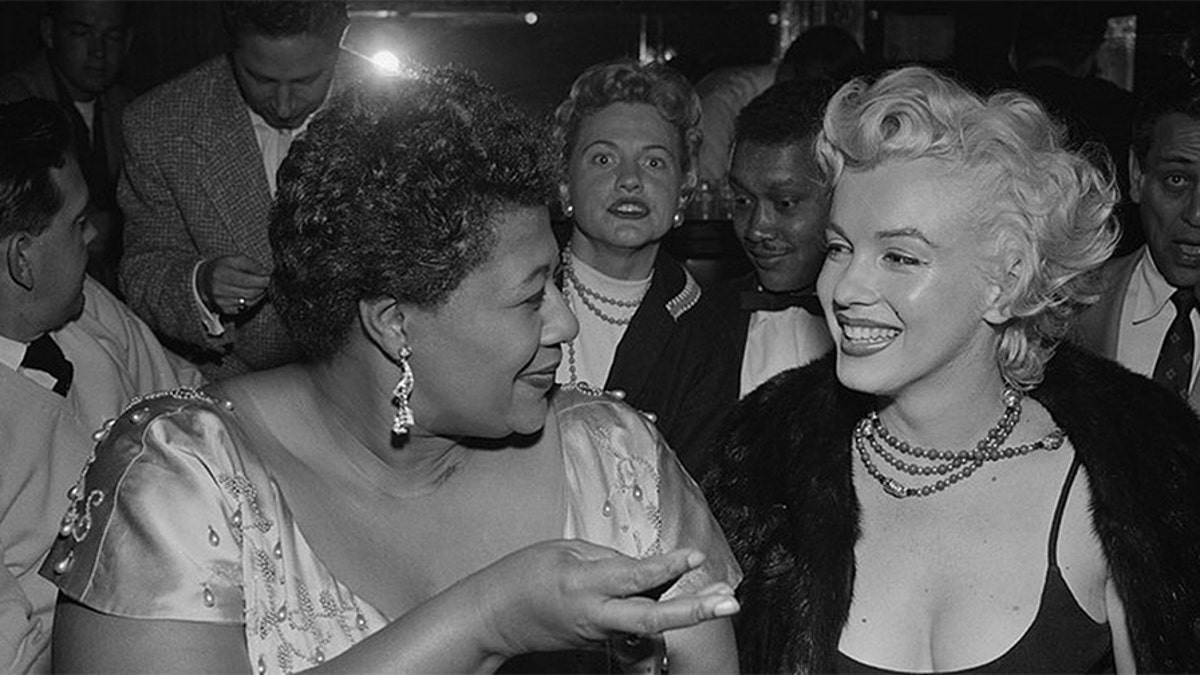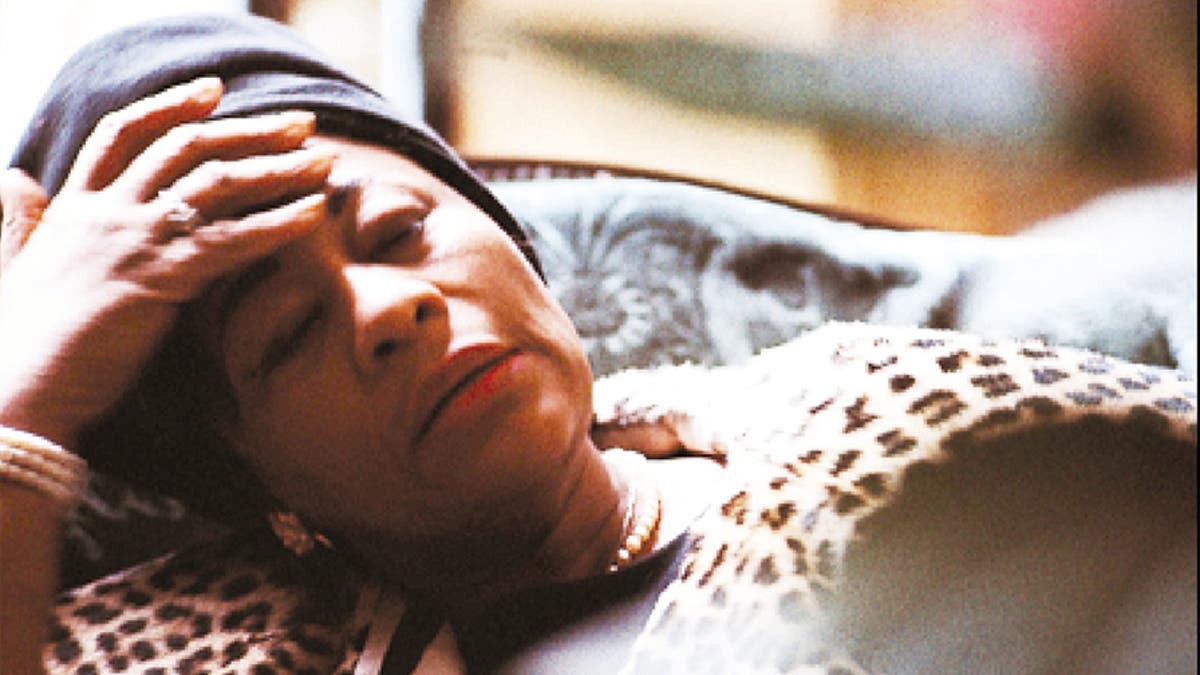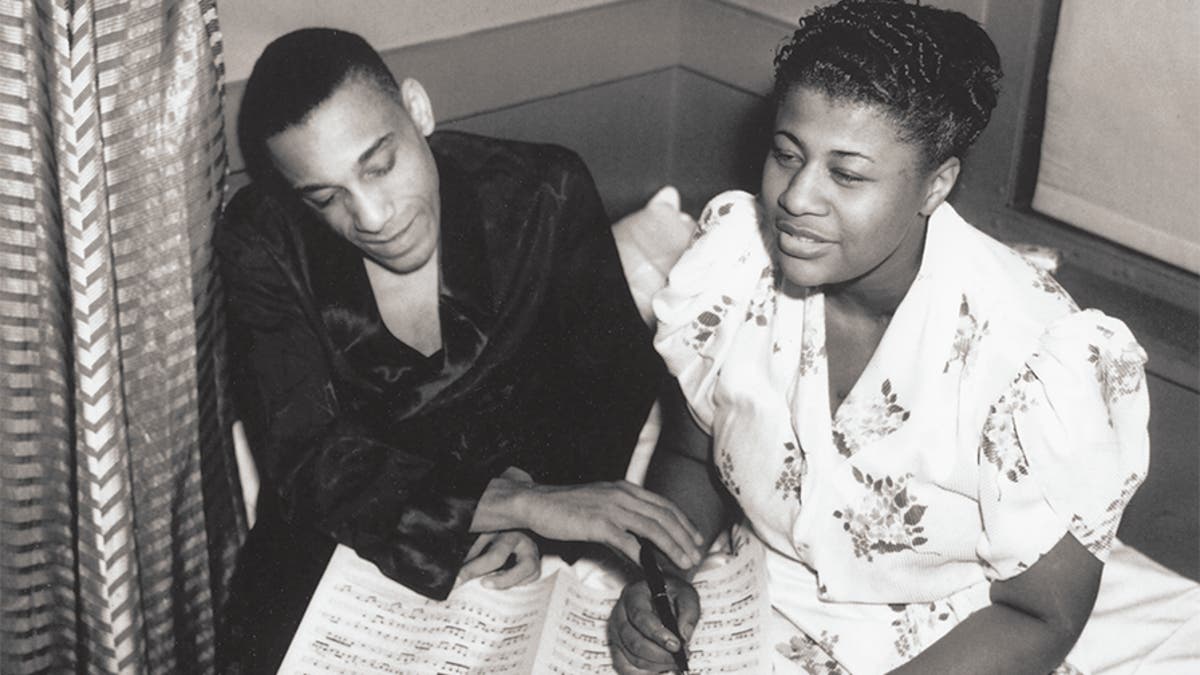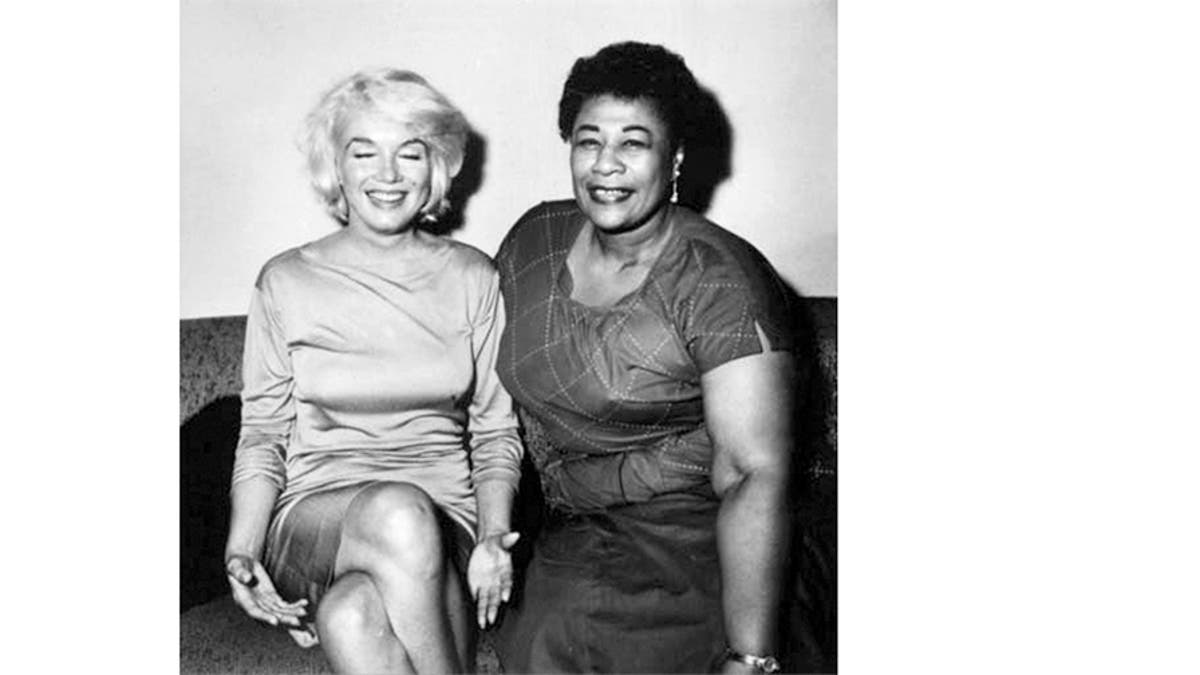
Ella Fitzgerald with Marilyn Monroe. (ELLA/Ultimate Symbol Publishers)
A new book on the life of legendary jazz singer Ella Fitzgerald hopes to shed light on the celebrated artist’s darkest hour before she became one of the most celebrated stars in music history.
Emmy Award-winner and Grammy-nominated author Geoffrey Mark has recently published a biography on Fitzgerald to commemorate what would have been her 101st birthday.
Fitzgerald died in 1996 at age 79.
Mark told Fox News Fitzgerald’s estate gave his book “Ella” their blessing and he had full cooperation from the star’s recording companies. Mark also assisted Fitzgerald in her later years and befriended her inner circle.
Mark insisted that despite Fitzgerald’s sweet, sunny voice that easily lit up any stage, few fans know the full measure of the cruelty she endured as a child before finding fame.

Ella Fitzgerald in 1974. (ELLA/Ultimate Symbol Publishers)
“Ella was discovered by God,” he said. “There’s no better way to put that. She had an awful, awful childhood… She was beaten, battered, abused and left on her own. However, Ella went to an amateur contest… She was put on stage and the spotlight hit her.
"She went on to win every amateur contest in Harlem… She came to the attention of Chick Webb, who was a magnificent bandleader and drummer. She became part of his organization. And in a very short time, an unwashed, unschooled, unloved, abused girl became a star by 16-17.”
The New York Times previously reported that as a child, Fitzgerald was sent to a reform school by a family court order. The institution’s last superintendent, who arrived in 1965, claimed Fitzgerald had been held in the basement and was “all but tortured.” Fitzgerald’s experience was so traumatic, she refused to return as an honored guest once she achieved stardom.
Mark said the abuse occurred before Fitzgerald turned 15.
“It’s an unfortunate set of circumstances,” said Mark. “Ella’s mother died in a car accident. And the man who was her mother’s companion, turned to Ella for comfort. He drank too much and forced himself on Ella, forcing her to run away from home… And because she ran away… the government grabbed her and stuck her in this awful place where children were sent — far away from where she was living.

Ella Fitzgerald in 1937. (ELLA/Ultimate Symbol Publishers)
"And because she was African-American, she was segregated from the white girls and was put into this little cottage where she had the worst food and worst clothing. And they literally dragged her to the basement, tortured her, raped her, abused her.”
Mark insisted that despite the harrowing ordeal, Fitzgerald relied on her faith in God for comfort, a belief that was cemented by her late mother.
“Ella, all her life, whenever she had challenges, relied on her faith,” he said. “She believed if she did the right thing, if she worked hard, the outcome would come out in her favor. She was a tenacious and incredibly wanting to make good of her life -- huge work ethic and burning ambition.”
But Fitzgerald’s woes didn’t completely go away after being discovered.

Ella Fitzgerald and Marilyn Monroe in 1961. (ELLA/Ultimate Symbol Publishers)
One Hollywood star who also had a troubled childhood involving a series of foster homes was willing to help when they met in 1955.
“Marilyn Monroe began going to Ella Fitzgerald’s concerts and nightclub gigs,” Mark explained. “She struck up a conversation with her and what they found out was they had both been teenagers forced out on their own, they had to survive for themselves, they both had to deal with being women in a business that was completely dominated by men… And Marilyn saw how Ella was treated sometimes for being black, for being overweight and for being in the jazz world."
Mark added that Monroe, one of Hollywood’s most sought-after actress in the ‘50s, was willing to help open up some doors for her beloved friend.
“It was Marilyn who said, ‘If you book her in this really high-class nightclub, I’ll bring 10 celebrities every night and you’ll get more publicity than you’re paying her in salary,’” he said. “It was Marilyn who followed her out of Los Angeles to other states and saw Ella being put in the side door. She would go to management and say, ‘If Ella doesn’t go through the front door, I won’t either.’ And she would grab Ella’s arm and together they went in.”
The two stars remained good friends until Monroe’s death in 1962 at age 36 from an apparent drug overdose.
Fitzgerald persevered. Her successful career spanned seven decades and she remained dedicated to her fans, touring 40 to 45 weeks of each year. She amassed countless awards, including 13 Grammys. Fitzgerald also recorded with Duke Ellington, Count Basie, Louis Armstrong and Frank Sinatra.

Ella Fitzgerald in 1961. (ELLA/Ultimate Symbol Publishers)
“Ella thought more about her audience,” said Mark. “Her concern was, ‘If you come to see me or buy one of my records, I want you to get your money’s worth… I want my music to be a new, positive, wonderful experience in your life.’... She had lovely homes that she was hardly in because she was busy bringing her talent to the people.. She wanted to be the best possible performer on any given day so that we would enjoy anything she did. That’s what she lived for.”
Fitzgerald’s adopted son, Ray Brown Jr., also stressed his famous mother was always eager to entertain.
“I don’t know anyone who was so hardworking, even when she was ill, even when doctors told her to stop work working, even when she financially absolutely did not need to,” Mark admitted. “Even when she came home for just 2-3 weeks, her son said, ‘She enjoyed laying on the couch and watching television and not having to put on the makeup. But after a couple of weeks, you would just see her getting itchy. The call was coming. She was waiting for the next thing she could get to.’”
Mark claimed Fitzgerald desperately missed her audience once her health forced her to stop working. She ultimately would suffer from diabetes, along with circulatory complications. The New York Times noted that in 1993, both of her legs had to be amputated below the knees.

Ella Fitzgerald in 1957. (ELLA/Ultimate Symbol Publishers)
However, Fitzgerald spent the last three years of her life surrounded by loved ones, including her son, grandchildren and good friends. She was also able to finally enjoy the home she frequently left behind for the stage.
“Her health was really failing,” said Mark. “She didn’t see well. She didn’t hear well. But she had a clear mind full of wonderful stories about those seven decades.
"She now had the time to sit down and tell those stories and share them with other people. And when her health deteriorated, she was enormously well-taken care off, surrounded by the trophies of her life, photos of the people she loved and the music she loved.”






